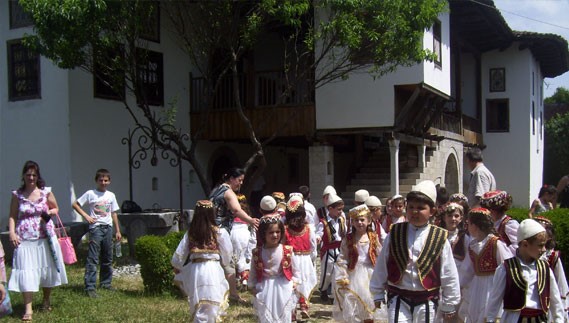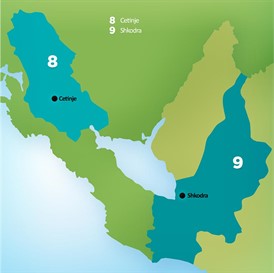

Northwestern Albania
Municipality of Shkodra
The museum has a very rich archaeological collection that bears witness to human activity in the Shkodra area as far back as the Neolithic.
From the Neolithic to the present
The museum has a very rich archaeological collection that bears witness to human activity in the Shkodra area as far back as the Neolithic. Some 350 objects are displayed in the permanent collection on the ground floor of the museum. The exhibits, arranged according to the chronological-thematic criterion form significant collections and show different aspects of life of the predecessors of Illyrians, Illyrians and Arberors. Tools, ceramic vessels, arms, votive objects, inscriptions, architectural elements and coins are displayed.
The ethnographic collection contains numerous handicrafts dating from the 18th to the 20th century. The displayed artifacts comprise woolen, silk, linen and cotton fabrics, traditional clothes, coverlets, pillows, curtains… Apart from their originality, they are characteristic form the richness of symbols and colors, and especially interesting are the different folk costumes of high artistic value. Some handicrafts from the ethnographic collection are original, typical of only Shkodra and its surroundings (Dukagjini, Malesia and Madhe, Puka, Zadrima, Anamali, Mirdita…). Part of the collection was made in town and village houses, whereas some handicrafts were made by craftsmen of the Large Bazaar (Ottoman shopping area). The collection also comprises handicrafts from the East, from Turkey and the Arab countries, as well as from the West, from Italy, Austria…
Wooden home furniture (wardrobes, dowry chests, tables, chairs) with various carved motifs occupy a central position in the ethnographic collection, as do tableware, wooden, ceramic, porcelain, copper and glass items. There are also craftsmen's tools and implements (blacksmith, leather-worker, craftsmen who made silver and copper objects and arms), as well as traditional instruments (lahuta, qifteli, zumare, saze, fyell, etc.).
The museum archive keeps numerous objects of great national and local importance. The oldest manuscript is a medieval parchment (palimpsest on four pages) from the Byzantine period. Most of the archive documents are manuscripts dating from the 19th century until the present. These are documents from the local government archive, foreign diplomatic representatives in Shkodra and religious documents. There are also letters, diaries, maps and other material concerning the history and way of living in Shkodra and its surroundings.
Collections of the Shkodra Historical Museum contain priceless objects and works of art dating from the 17th century until the present. These are collections of arms, flags and coats-of-arms of Shkodra, collections of seals, numismatic collection, collection of coins, paper money, ancient and modern medals, collection of paintings, recordings and mementoes of patriots, writers, poets, actors and musicians.
The museum library has at its disposal 12,000 books and magazines. These are mostly books of Albanian and Balkan topic written in Albanian, but also in Latin, Italian, English, French, Turkish, Russian, and German. The oldest book in Albanian is the Christian Doctrine (Doktrina e Krishtene) written by Pjeter Budi, and printed in Rome in 1618.
The library was significantly enriched in 1995 with a donation by Prof. Arshi Pipa who donated as many as 2,400 books.











